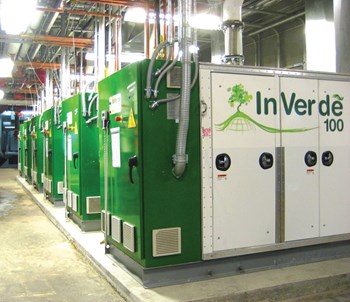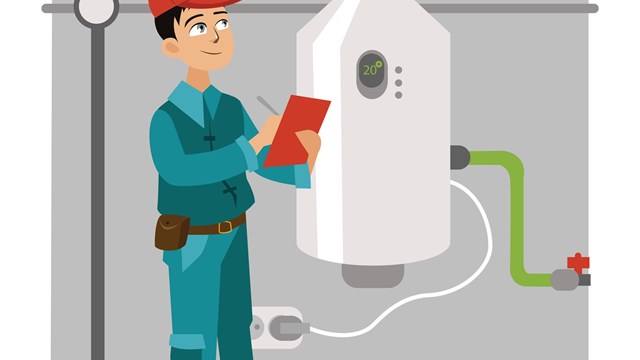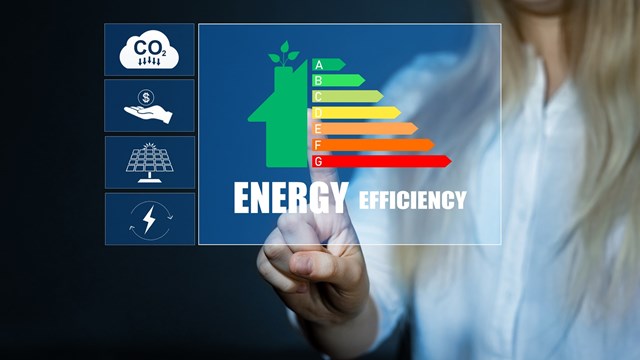
The process of producing energy to metropolitan condos and co-ops has dramatically evolved in recent years. It's advanced to the point in which Lewis Kwit, the president of Energy Investment Systems in New York City, makes a relatively accurate—and amusing—comparison. “The old way of using a traditional energy-producing system is like using a chainsaw to cut butter,” he chuckles.
Specifically, though, what are these new energy-producing technologies? Can they save money long-term and short-term, for a co-op, condo or an HOA? How can they be acquired when it seems, quite literally, as if major commercial energy suppliers are the only option available? Some communities are exploring these questions and coming up with solutions that are saving them both energy and money.
David Guralchuk, vice president of the energy division at Falcon Engineering, headquartered in Bridgewater, says that in New Jersey, condominium communities can receive their power from a litany of providers, including PSE&G, JCP&L, Atlantic City Electric, Rockland Electric and Elizabethtown Gas.
“Utility-sourced energy has to travel relatively long distances in order to reach a property,” says Guralchuk. “Because of this, inefficiencies creep in which need to be accounted for, and the burden of payment for said efficiencies falls on the utility customer. As co-generation systems produce electricity on-location, they’re more efficient than having power provided by a third party some distance away. For every 154 units of energy that a utility company uses to produce electricity and thermal energy, only 75 units ultimately reach the customer’s doorstep—a 49 percent efficiency rate.”
“When a co-generation system is used, for every 100 units of energy run through the system, 75 usable units are produced,” Guralchuk continues. “Thus co-generation can be 25 percent more efficient than power derived from a utility company.”
Some Definitions
By definition, co-generating buildings produce a portion of the energy required to operate on their own with the appropriate equipment, relying on major suppliers only for the balance of what they cannot produce. Sometimes, they even sell surplus energy back to the suppliers, making a profit from their efficiency.
In reality, co-generation has existed for decades; it has, though, required time to gain support and visibility. In fact, many people aren’t fully aware that the technology still exists. For those not in the know, co-generation is the use of natural gas-fueled energy to create electricity, and is oftentimes called combined heat and power (CHP) because it delivers two forms of energy—electricity, and hot or chilled water.
According to representatives at the EPA, “Combined heat and power technologies are efficient and clean approaches to generating electric power and useful thermal energy from a single fuel source. Combined heat and power is used either to replace or supplement conventional separate heat and power (SHP).”
Kwit explains how, in a traditional system, water is heated into steam which turns a turbine at an extremely high speed with a magnetic source in order to generate electricity. In these systems, most of the heat is wasted, heading up the smokestacks—or sometimes—into the river, also increasing environmental concerns.
To better understand CHP energy, Kwit explains, “It takes one British Thermal Unit (BTU),” he says. “It is like lighting a match, and in a traditional system, it takes 11,450 BTU to create 1 kilowatt hour of electricity; however, in a co-generation unit, it would require 3,412 BTU’s for the same amount of electricity.” This is due to higher efficiency and lack of wastefulness.
A co-generation unit is smaller, and the technology recaptures the heat, and the energy is used for thermal purposes, like heating water and warming units in the winter season. Because electricity is fed into the building, the process lowers the electric bill for each unit while at the same time reducing greenhouse gas emissions, having vast impact on environmental conditions.
“It is more efficient than traditional power companies because there is not as much wasted energy,” says Kwit. “The hot water is pumped into the office…not fed out of cooling towers, like with many traditional energy plants.”
Wastewater treatment plants are an example of combined heat and power systems. Such factories offer alternative power sources with a higher efficiency factor. Subsequently, these systems are used to supplement a traditional, local power company, and therefore save on residential electricity costs and also reduce negative environmental gas emissions.
Paying for Itself
Benjamin Locke, CEO of Tecogen, a national CHP technology manufacturer that installs and maintains high efficiency, ultra-clean combined heat and power products, says buildings that use a lot of hot water are best suited for a CHP system. “For example, an office building, not a lot of people take showers in an office building. But a large residential building, people take showers and do laundry, that’s a great candidate,” he says. Larger hotels, health care facilities, and athletic clubs would also benefit immensely from CHP systems “Everybody needs electricity, but you’re also making hot water because you’re capturing all the heat that’s generating when this engine’s running,” says Locke. Instead of wasting that energy like cars do through the tailpipe, it’s conserved and used in the form of hot water.
However, residential units are choosing this type of energy source more frequently, as well. Currently the drawback to CHP systems is their greater upfront cost, which can pose a financial challenge for co-ops and condos. Of course, over time, big savings can accumulate.
As Guralchuk explains, co-generation can let owners control their utility costs, to a degree. “As you can generate electricity independent of a utility company, you can reduce your peak demand charges by running the co-generation plant during those times, (i.e. hot summer days) when the air conditioning is likely to be running at full blast,” he says. “Also, because of the inherent energy efficiencies associated with manufacturing electricity and heat locally, you’re reducing greenhouse gas emissions significantly.”
“When power comes from off-site, you're only getting about 30 percent of the generated electricity at your plug,” says Stuart E. Weidie, president and CEO for Blossman Gas, Inc., an energy supplier based in the Southeast. “More than 30 percent of the energy is lost in production, and still another 30 percent is lost in transmission over power lines.”
In order to host a combined heat and power energy system, a building requires—quite simply—a natural gas supply, a chimney, or some exhaust source for the heat production, and the unit itself.
The idea behind CHP is self-sufficiency; a resident or building can have a semi- self-sufficient unit or an entirely self-sufficient unit. As combined heat and power is designed for buildings where there is a need for both electricity and hot water on site, some buildings may not need hot water. Again, while the cost over time is less expensive than that of traditional technologies, there is a high upfront cost in this type of energy.
And there are other reasons why a property may not opt for co-generation, according to Guralchuk. To cite but one, some communities may just be incompatible with such a system. “If the building is primarily electric—meaning that the heating and cooling systems are electrically driven—then co-generation doesn’t make much sense, as there isn’t anywhere to apply the waste heat from the system,” he says. “The system would only be generating 30 usable units of electricity for every 100 units put in, which is inefficient.”
Savings You Can See
In a study by Rutgers University, a cost/benefit analysis shows a 75 percent overall efficiency of CHP versus 51 percent of traditional; these statistical findings have the strong potential to directly and significantly impact condo and co-op monetary savings. According to Tecogen.com, “this same efficiency gain with combined heat and power is what helps an end-user cut his utility bills significantly…as much as 50 percent."
Today, more and more buildings are using the technology, and the numbers in New Jersey continue to grow each year. Co-generation is here to stay, it seems. Specifically, according to Green Crown Energy, the United States aims to have “20 percent energy efficiency by co-generation by 2030.”
Wesley Strickland is a freelance writer and a frequent contributor to The New Jersey Cooperator.






Leave a Comment